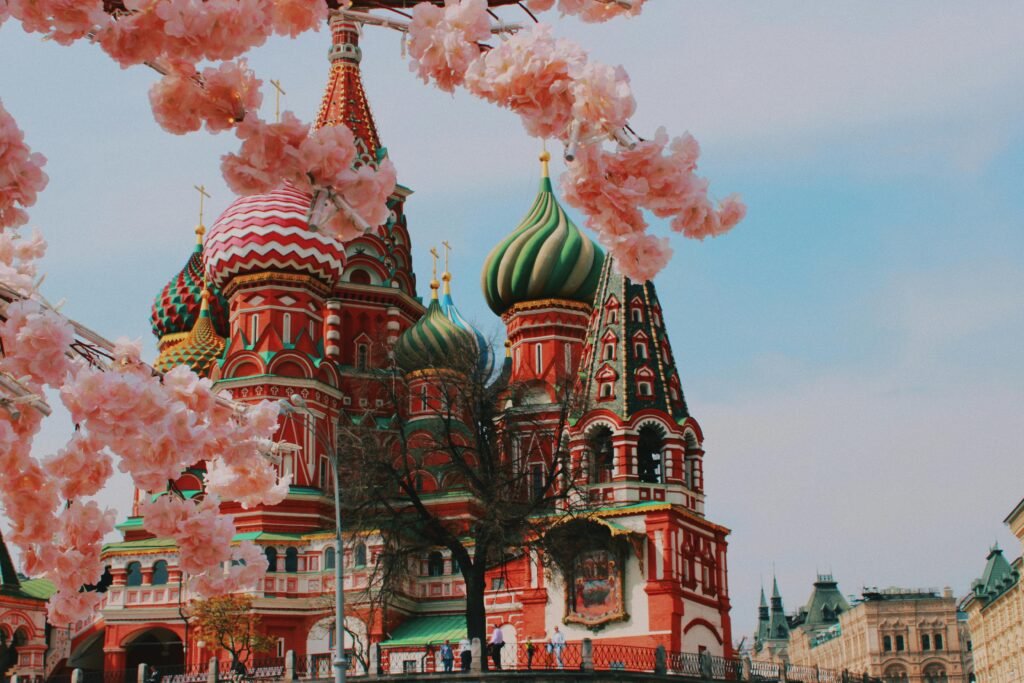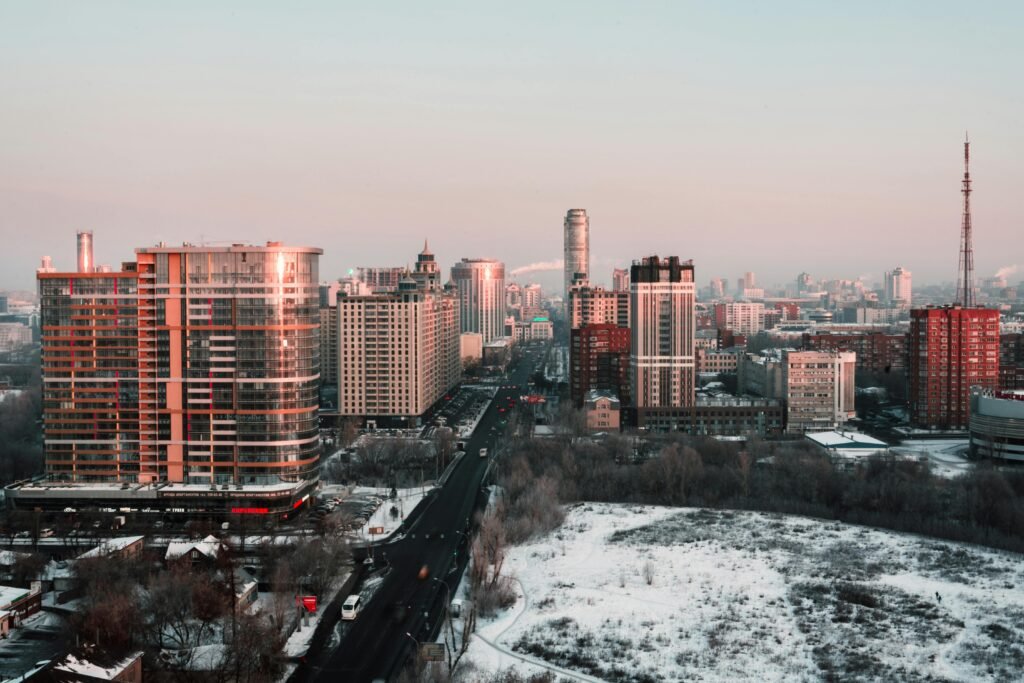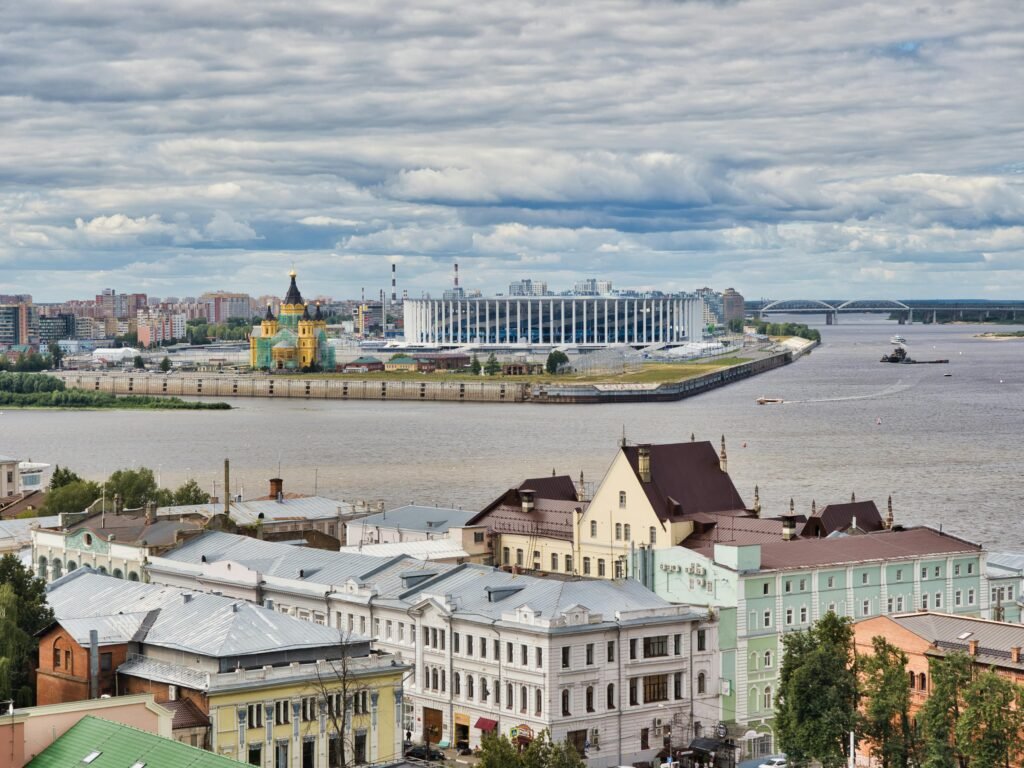Introduction to the Trans-Siberian Railway
The Trans-Siberian Railway is not just a means of transportation; it represents an iconic journey traversing the vast landscapes of Russia, stretching over 9,289 kilometers from Moscow to Vladivostok. Established in the late 19th century, construction of this extensive railway began in 1891 and continued for more than two decades. It was officially completed in 1916, coinciding with a period of significant political and social change within the empire. The railway was developed not only to promote commerce but also to enhance connectivity across the expansive territories of Siberia, making it one of the most significant engineering accomplishments in history.

Significantly, the railway facilitates access to remote areas of Russia that would otherwise be isolated. It crosses eight time zones and numerous industrial towns, historical cities, and natural wonders, offering travelers a unique perspective of the geopolitical and cultural diversity that defines this vast nation. From the snow-capped Ural Mountains to the serene shores of Lake Baikal, the journey on the Trans-Siberian Railway allows for an immersive experience rivaled by few others. It serves as an essential artery, enabling the movement of goods, people, and ideas across regions that have historically been difficult to traverse.
The significance of this railway extends beyond its physical structure; it is a symbol of Russia’s ambition and resilience. Travelers embarking on the route have the opportunity to witness the country’s evolution firsthand, experiencing the distinct flavors of its varied cultures and traditions. Consequently, a journey on the Trans-Siberian Railway is often regarded as a rite of passage for adventurous souls, appealing not only to seasoned travelers but also to those seeking an extraordinary adventure. Thus, understanding the history and importance of this railway can enrich one’s overall travel experience while navigating through Russia.
Planning Your Trip
Traveling along the Trans-Siberian Railway is undoubtedly a remarkable experience, and proper planning is crucial to ensuring a smooth and enjoyable journey. One of the first considerations is selecting the right time to travel. The railway operates year-round, but the peak season typically runs from June to August. During this period, travelers can expect milder weather and an abundance of flora and fauna, making it an ideal time for sightseeing. However, the shoulder seasons of spring (April to May) and autumn (September to October) may also offer pleasant weather conditions with fewer crowds, allowing for a more intimate exploration of this vast landscape.
After determining the best time to travel, it is essential to decide on the length of the trip. The full journey from Moscow to Vladivostok spans approximately 9,289 kilometers and takes about six to seven days by train. However, many travelers opt for a more flexible itinerary, breaking the journey into segments. This approach allows for exploration of various cities along the route, such as Yekaterinburg, Novosibirsk, and Irkutsk. When deciding on the duration, consider your interests, budget, and energy levels, as spending long stretches on a train may be exhausting for some.
Furthermore, evaluating the various routes is vital, as the Trans-Siberian Railway offers several options. The most common route connects Moscow to Vladivostok, but travelers can also consider the Trans-Mongolian route, which leads to Mongolia and Beijing. Alternatively, the Trans-Manchurian route provides a direct connection to China, bypassing Mongolia. Each route presents unique attractions and experiences, so researching the stops along each path will help in creating a fulfilling travel experience. Proper planning will ultimately transform your journey into a memorable adventure across Russia’s stunning landscapes.
Types of Trains and Classes
Traveling across Russia via the Trans-Siberian Railway presents an opportunity for passengers to experience an array of train types and classes, catering to diverse preferences and budgets. Understanding these options can significantly enhance the journey. The primary types of trains operating on this line include the “Rossiya”, “Zarya”, and “Expedition” trains, each offering unique travel experiences.
The “Rossiya” is the most famous train on the Trans-Siberian route, providing both functional transportation and a classic rail experience. Typically, it operates with multiple classes including economy, kupe (shared compartment), and higher-class sleeping arrangements. Economy class offers basic amenities and shared facilities, making it an economical option for budget-conscious travelers. The kupe class, featuring closed compartments for four passengers, strikes a balance between comfort and affordability, while also offering privacy.

For those seeking a more comfortable experience, first-class compartments on the “Rossiya” provide larger sleeping areas and more amenities, such as individual bedding and spacious seating. In contrast, luxury trains like the “Golden Eagle” and “Imperial Russia” offer premium services, including gourmet dining, staterooms with en-suite bathrooms, and tailored sightseeing tours. These classes are ideal for travelers looking to indulge in a lavish railway experience while taking in the stunning scenery of the Siberian landscape.
Choosing the right class ultimately depends on individual preferences and budget constraints. It is advisable to consider the duration of travel, type of amenities desired, and the overall experience one wishes to gain. Whether selecting the featured economy class for a vibrant atmosphere or opting for the relaxation of a luxury train journey, the Trans-Siberian Railway truly offers a train for every traveler.
How to Purchase Tickets
Purchasing tickets for the Trans-Siberian Railway can be an exciting yet daunting task due to the various methods available. Travelers have several options when it comes to securing their tickets, allowing for flexibility in how they approach the booking process. Online ticket purchasing has become increasingly popular, and official railway websites, such as RZD (Russian Railways), provide an efficient platform for booking train journeys. By navigating their user-friendly site, travelers can select routes, travel dates, and even seat preferences.
In addition to online purchases, using reputable travel agencies is another method worth considering. Agencies often provide personalized services, helping travelers choose the best routes and classes suited to their needs. Some travel agencies specialize in railway journeys across Russia and offer packages that can include accommodation and local tours, thus simplifying the entire travel experience.
Direct purchases at train stations are also a viable option, especially for those who prefer an in-person approach. However, it is advisable to arrive early, as ticket availability may be limited, particularly during peak travel seasons. When purchasing tickets at a station, it’s beneficial to be aware of essential documents required, such as a passport, to ensure smooth transactions.
To secure the best fares, travelers should consider booking their tickets well in advance. This not only gives access to lower prices but also ensures preferred travel dates and class of service. Moreover, it is essential to be cautious of common pitfalls, such as potential scams or overpricing by third-party sellers. Always verify credentials when purchasing from unofficial sources. By being informed and organized, travelers can navigate the ticket purchasing process confidently, paving the way for an incredible adventure across Russia’s vast landscapes.
Must-See Stops Along the Route
The Trans-Siberian Railway is not just a mode of transportation but a journey through the heart of Russia, offering travelers an opportunity to experience diverse landscapes, rich cultures, and historical landmarks. From the bustling capital to serene lakes, each stop along the route has something unique to offer.
Starting in Moscow, the journey begins in a city known for its iconic architecture and vibrant culture. Visitors should not miss the Red Square, where the magnificent St. Basil’s Cathedral stands. The Kremlin, a UNESCO World Heritage site, houses several museums and cathedrals, giving a glimpse into Russia’s power and heritage. Enjoy a leisurely stroll along the Arbat Street, filled with shops, cafes, and street performances.

Moving eastward, the next significant stop is Yekaterinburg, a city steeped in history. It was here that the final Romanov family was executed, and the Church on the Blood stands as a poignant memorial. Travelers can explore the local galleries, including the Yekaterinburg Museum of Fine Arts, as well as enjoy a taste of local cuisine at nearby restaurants, indulging in dishes like pelmeni and borscht.

The journey continues to Irkutsk, often referred to as the “Paris of Siberia.” This city serves as a gateway to Lake Baikal, the world’s deepest freshwater lake. Here, travelers can embark on scenic boat tours or hike along the picturesque shoreline. Irkutsk also showcases Russian wooden architecture, particularly the historic Decembrists’ houses, providing insight into the lives of exiled revolutionaries.

Finally, the journey concludes at Vladivostok, a dynamic port city. Known for its stunning coastal views, visitors can explore the Primorsky Oceanarium or the historic Vladivostok Fortress. The Golden Horn Bridge offers splendid panoramas of the harbor, making it an ideal place for photographs. The city’s bustling markets and vibrant nightlife also invite travelers to immerse themselves in the local culture.

Each of these stops along the Trans-Siberian Railway route offers a wealth of experiences, making the journey not just about reaching a destination, but about embracing the remarkable tapestry of Russian life.
Packing Essentials for the Journey
Packing for a journey on the Trans-Siberian Railway requires thoughtful consideration, as the train travels through diverse climates and landscapes across Russia. To ensure comfort and enjoyment during the journey, it is essential to prepare clothing that caters to varying weather conditions. Layering is advisable, particularly in transitional seasons such as spring and autumn. A mix of breathable fabrics, such as cotton and merino wool, can provide flexibility. Essential items include a warm jacket, thermal undergarments, and waterproof outerwear for rainy days. In colder months, insulated boots, gloves, and hats are vital to keep warm during stops at various locales.
Personal items play a key role in enhancing comfort on long train journeys. Travelers should consider packing travel pillows, lightweight blankets, or shawls, which can significantly improve sleep quality while on board. Additionally, a good set of earbuds and an eye mask are practical for minimizing noise and light disturbances when resting. Toiletries should be kept limited to essentials such as toothbrushes, toothpaste, and deodorants in travel-sized containers, while wet wipes and hand sanitizer are crucial for maintaining hygiene during the trip.
While dining options are available aboard the train, packing snacks can enhance the travel experience. Consider including a selection of dried fruits, nuts, and energy bars that are easy to consume and provide necessary sustenance. Moreover, a reusable water bottle is highly recommended—staying hydrated is important, especially on long journeys. Being prepared with a small supply of favorite tea or coffee can make for a comforting treat during the hours shared on the train. Thoughtful packing not only contributes to an enjoyable experience but also ensures that travelers remain comfortable and can fully embrace the breathtaking views along the Trans-Siberian Railway.
Cultural Etiquette and Tips
Traveling through Russia, particularly aboard the iconic Trans-Siberian Railway, is not only a journey through stunning landscapes but also an immersion into rich cultural heritage. Familiarity with Russian etiquette can significantly enhance your travel experience and foster positive interactions with locals.
Greetings are a fundamental element of Russian culture. A firm handshake is the customary greeting among men, while women may greet each other with a light hug or a kiss on the cheek. It is polite to maintain eye contact during greetings, as this conveys sincerity and respect. When addressing people, using their patronymic name, which incorporates their father’s name, is a sign of respect, particularly in formal contexts. For instance, calling someone “Ivan Ivanovich” instead of just “Ivan” denotes a higher level of courtesy.

Dining customs in Russia reflect a culture that values sharing and hospitality. When invited to a local’s home, it is customary to bring a small gift, such as flowers or sweets, as a gesture of appreciation. During meals, wait to be invited to begin eating, and use utensils respectfully. Russians typically enjoy hearty meals, and it is common for them to toast before drinking. It is essential to reply to toasts rather than remain silent, as doing so could be interpreted as an unfriendly gesture.
Another important aspect of Russian culture is the appreciation for local traditions. Understanding regional customs may vary from one part of the country to another, particularly between urban and rural settings. Engaging respectfully with local celebrations, such as Maslenitsa (a pre-Lenten festival) or New Year’s traditions, can deepen your connection with the culture and demonstrate your respect for their ways of life. Embracing these cultural elements will enrich your journey across the diverse landscapes of Russia.
Safety and Health Considerations
Traveling through Russia by train, particularly along the Trans-Siberian Railway, can be an exhilarating experience filled with breathtaking landscapes and cultural encounters. However, it is vital to prioritize safety and health to ensure a smooth journey. First and foremost, it is recommended to keep your belongings secure at all times. Use a travel lock for your luggage, and carry valuable items, such as passports and electronics, in a concealed pouch. Familiarize yourself with the local emergency contact numbers as well, particularly for your country’s embassy or consulate.
Travel insurance is another crucial aspect of traveling in Russia. Comprehensive travel insurance can provide coverage for unforeseen circumstances like trip cancellations, medical emergencies, or lost luggage. Ensure that your policy covers the entire duration of your journey, including any activities you plan to undertake. It is wise to keep a copy of your insurance policy and emergency contacts readily accessible.
Health considerations should also be taken into account while embarking on the Trans-Siberian Railway. Before your trip, consult with a healthcare professional regarding any necessary vaccinations, particularly for diseases such as hepatitis A, hepatitis B, and typhoid fever. Additionally, consider bringing a basic travel health kit containing common medications for headaches, stomach issues, or colds. Staying hydrated during long train rides is essential, so make use of refillable water bottles whenever possible.
Long journeys can lead to discomfort, especially in confined spaces. To combat this, make it a point to stretch your legs and take short walks along the train’s corridors. The cabin’s air quality may vary, so consider packing a small personal air purifier or simply opening the window when feasible to let in fresh air. Adopting these safety measures and health tips can greatly enhance your travel experience across Russia’s vast landscapes aboard the iconic Trans-Siberian Railway.
Conclusion: Embracing the Adventure
Traveling on the Trans-Siberian Railway is not merely a means of transportation; it represents an opportunity to engage with one of the most significant rail networks in the world and to embrace the diverse cultures and landscapes that Russia has to offer. Spanning thousands of kilometers, this legendary journey transforms ordinary travel into an extraordinary adventure. From the snow-capped Ural Mountains to breathtaking Lake Baikal, each stretch of the journey provides a unique glimpse into Russia’s rich history and vibrant present.
The age-old railway connects an array of cities and towns, each boasting its own character, traditions, and stories. Passengers have the chance to meet locals, sample regional cuisines, and witness stunning vistas from the comfort of their train seats. The variety of experiences available to travelers truly enriches the journey, making it more than just a movement across a map. Instead, it becomes a bridge to deeper understanding and appreciation of the Russian landscape and culture.
Embracing the adventure on the Trans-Siberian Railway also prepares one for moments of self-reflection. As the train slowly glides through vast stretches of wilderness or quaint villages, it provides a perfect setting for contemplation. The pace of this journey encourages travelers to disconnect from the rush of everyday life, thus fostering a sense of perspective and introspection.
In conclusion, the experience of traveling on the Trans-Siberian Railway holds the potential for profound transformation. Whether one is seeking adventure, cultural immersion, or personal growth, this railway journey offers it all. Thus, those who dare to embark on this once-in-a-lifetime trip will find themselves enriched by unforgettable experiences and cherished memories. Adventure awaits on these iconic tracks—ready to be embraced.






